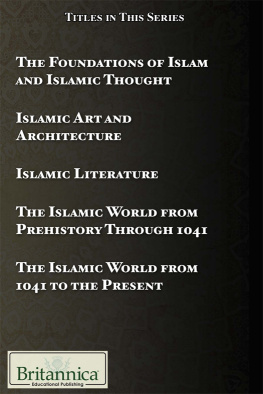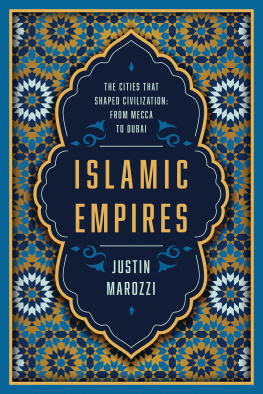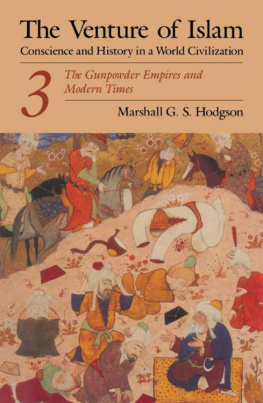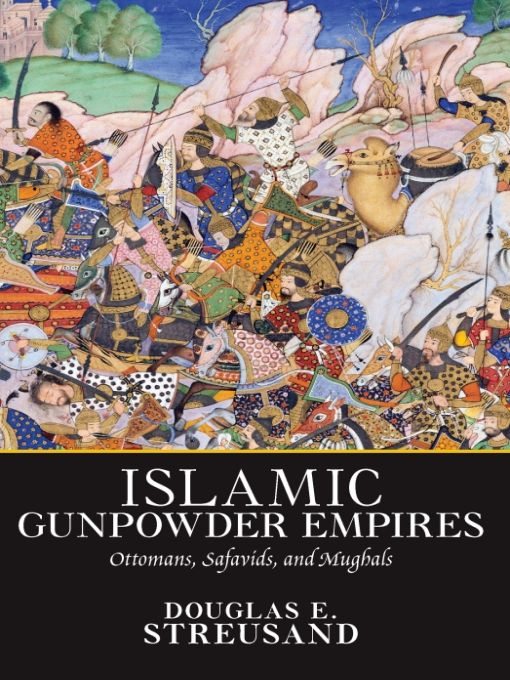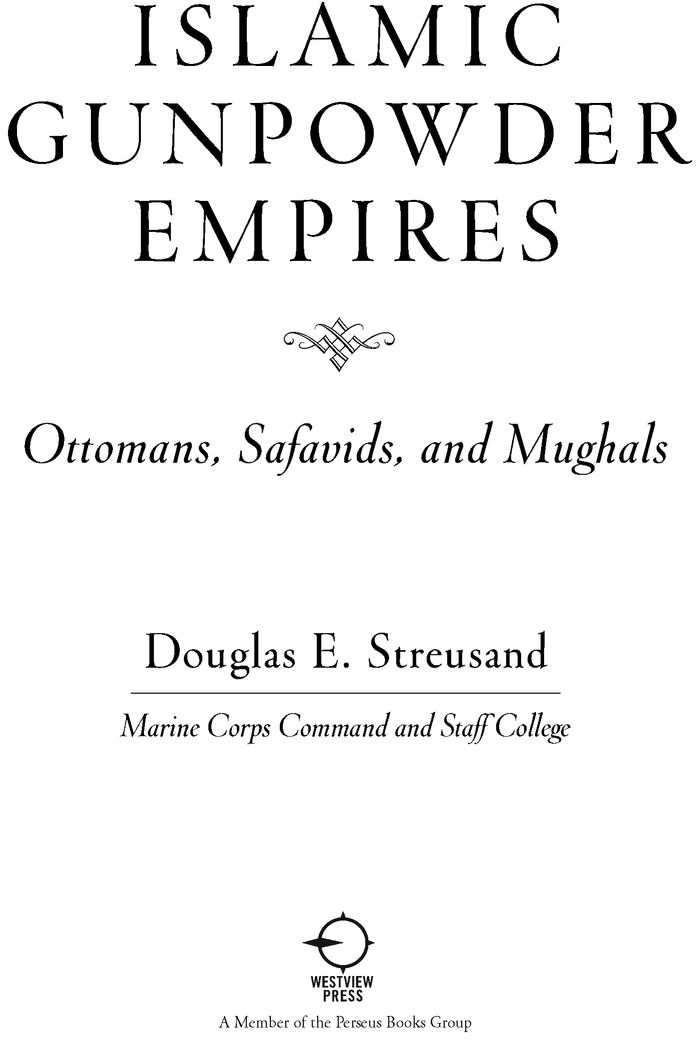Table of Contents
Table of Figures
Preface
I first conceived of this book as a graduate student in the early 1980s, began it as a project in 1990, and have taken twenty distracted years to complete it. Its purpose has remained constant: to provide a coherent, current, and accessible introduction to the Ottoman, Safavid, and Mughal empires, using comparison to illuminate their distinctive features. Within that general mission, I sought to accomplish the following objectives:
to put the three empires in the context of their common background and political goals
to incorporate current historiography into a new synthesis rather than recycle the findings of earlier general accounts
to reevaluate the concept of the gunpowder empire and provide a more accurate and complete explanation of the growth and durability of the three empires
to explain the complex, diverse, and dynamic political ideologies of the empires
to present the empires as part of a connected Islamic world that was itself part of a more broadly connected global system in which commercial and cultural networks crossed political boundaries
to assess the issue of the decline of the three empires without reference to the eventual global superiority of the West
to depict the historiography of the empires as dynamic rather than static
Islamic Gunpowder Empires is not a comprehensive history of the Islamic world in the early modern era; it is both spatially and topically incomplete. It excludes Morocco, sub-Saharan Africa, central Asia, and Southeast Asia and pays insufficient attention to social, cultural, and intellectual history. As a study of power and political order, it focuses on political, military, and economic history, on the problems of power and the burdens of power holders. It does not ignore social and cultural history entirely but seeks to place those topics in political context.
Although a history of power, this volume developed in the light of a history of conscience, Marshall G. S. Hodgsons The Venture of Islam: Conscience and History in a World Civilization. Though Hodgson died more than forty years ago, The Venture of Islam remains the greatest study of Islamic civilization. Book 5, in which Hodgson propounds his conception of gunpowder empires, suffers more from the incompleteness caused by his sudden death than any other part of the book. I undertook this project in hope of providing a current and coherent alternative to that section of Hodgson.
In doing so, I sought to continue Hodgsons enterprise of presenting the complexity and diversity of Islamic civilization. Like Western civilization, Islamic civilization is, and has been, a composite of different elements in tension. The equation of Islamic civilization with Islam and of Islam with the Shariah obscures, distorts, and oversimplifies complex realities. The emphasis on the wide variety of principles of political legitimacy operating in the three empires draws attention to this complexity. I intend this book as history-minded history, as J. H. Hexter explains the concept in his well-known essay The Historian and His Day, but history-minded history inevitably illuminates the present.
The target audience for the book is upper-level undergraduates, who have taken a world history survey. The book will fit into an Islamic civilization survey course, the original venue for which Hodgson produced Venture, or serve as the nucleus for a course on the three empires. It differs from most undergraduate texts in that it encompasses historiographic controversy. I believe that students will benefit from knowing that historians disagree and interpretations change.
In the two decades since I began the project, the historians of all three empires have been extremely productive. I have been hard put to keep pace with them and have tried to do so systematically only with works published up to 2006; I have consulted later works for clarification of particular problems or simple convenience.
Because I have completed the book while on the faculty of the Marine Corps Command & Staff College, a unit of Marine Corps University, I must include the mandatory disclaimer that it does not speak for Marine Corps University or for any agency of the U.S. government. I have, in fact, the same, if not greater, academic freedom here as at a civilian university. The college and university leadership has been strongly supportive of my research but expressed little interest in its content.
Although at various times I have studied original sources, both documents and texts, on all three empires, I have conducted extensive research only on the Mughals. The Mughal chapter is derived in great part from my Formation of the Mughal Empire and from further research that I hope will appear in a later book on the Mughals. The Ottoman and Safavid chapters depend on the work of other historians. Some of the interpretation is original, but none of the research is. My many professional colleagues who have spent untold hours deciphering Ottoman archival documents may resent my intrusion into their field; I can only respond that if my book succeeds in its purpose, its readers will swiftly progress from my work to theirs. Like most general works, it is likely to satisfy its readers in its treatment of everything but their own specialties.
The introduction explains the historiographic setting and interpretive themes of the book. The second chapter, Common Heritage, Common Dilemma explains the shared political traditions and structures and the political impasse in the Islamic world that the Ottoman, Safavid, and Mughal polities overcame. The three substantive chapters begin with a brief description of the history and institutions of each empire, followed by chronological summaries and sections on the military political institutions, economies, societies, and cultural forms. The conclusion deals with overall interpretive issues.
Notes
J. H. Hexter, The Historian and His Day, in Reappraisals in History: New Views on History and Society in Early Modern Europe, with a foreword by Peter Laslett (Evanston, IL: Northwestern Univesity Press, 1961), 1. Multiple reprints. Hexter attributes the concept to R. L. Schuyler.
Authors Note and Acknowledgments
Twenty years have passed since Peter Kracht, the original editor for the project at Westview, called me about writing this book. The reader may have no interest in the circumstances that caused the long delay but is at least entitled to an explanation. For my part, I received no outside funding to support the project and spent most of those years engaged in child rearing as well as other professional pursuits. I have had a full-time university affiliation only since 2005 and never had ready access to a major research library. The only form of institutional support I have received has come from the Institute of World Politics (IWP), where I have taught as an adjunct professor since 2006, which provided me with research assistance in the summers of 2008 and 2009.
Much has changed over those two decades. My parents, Jane and Alan Streusand, who were enormously supportive of my aspirations in general and of this project in particular, have passed from the scene. My daughters, Deb and Rachel, have grown from cute little girls into formidable young women. I do not rue the time I spent nurturing them rather than this book. My wife, Esther, has been the constant; I hope she shares in the satisfaction of the projects completion.


